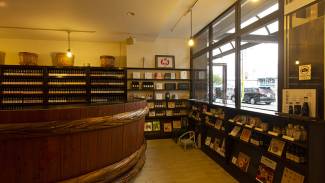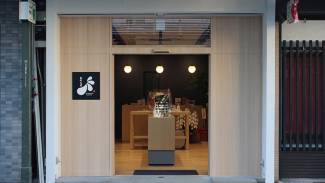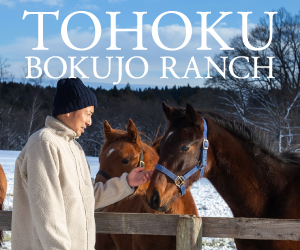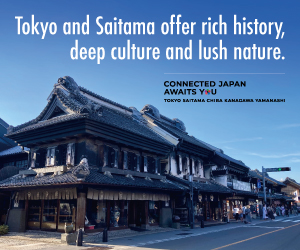YAMAROKU SHOYU
BACK TO THE BEGINNING
AUTHENTIC SOY SAUCE MADE IN WOODEN BARRELS
Shodoshima brewery keeps tradition of wooden soy sauce barrels alive through construction workshops
Shodoshima is the second-largest island in the Seto Inland Sea. Its name literally means “small bean island,” and indeed, a small bean has supported life on the island for over 400 years. That is the soybean, and Shodoshima is a major producer of soy sauce.
Like wine, soy sauce is made through fermentation. In wine production, although stainless steel tanks have become the norm, some wineries still use wooden barrels. Likewise, today most soy sauce manufacturers use steel tanks. On Shodoshima, however, many of the island’s soy sauce producers continue to use traditional wooden barrels, and among them is Yamaroku Shoyu Co., a producer well known for its dedication to this traditional, time-honored method.
“The history of our company isn’t clear, but according to my grandmother, it goes back at least 150 years,” said the brewery’s fifth-generation President Yasuo Yamamoto.
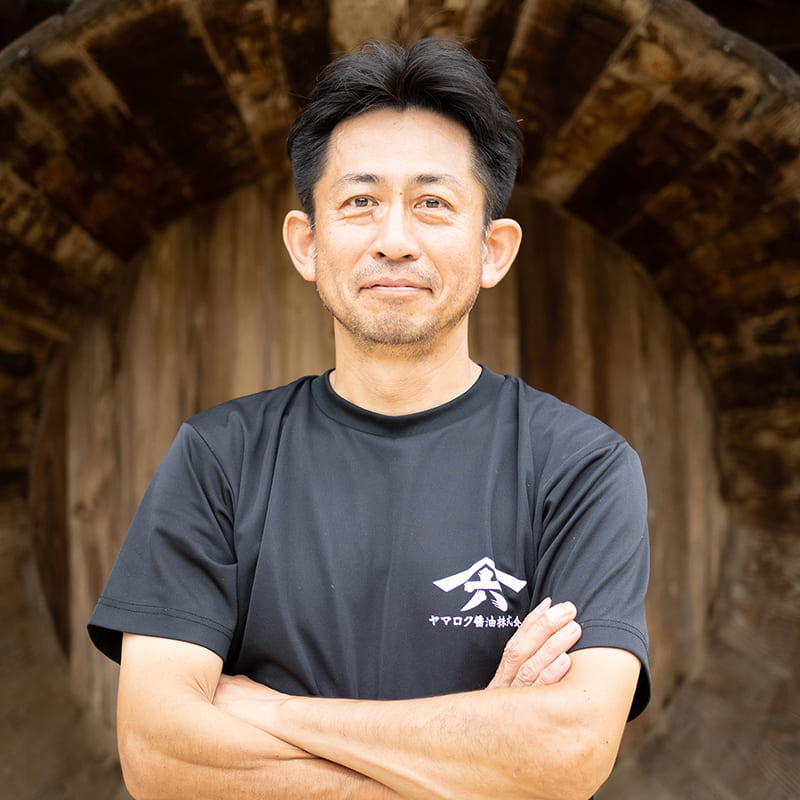
There are thought to be around 3,000 wooden soy sauce barrels in Japan, including more than 1,000 on Shodoshima, making the island truly the home of wooden soy sauce barrels. According to Yamamoto, only about 1% of Japanese soy sauce is produced in such barrels.
Yamaroku Shoyu itself has 90 of these vessels and is popular with tourists who come to view its historic brewery buildings. And although guiding visitors adds significantly to Yamamoto’s workload, he doesn’t seem to mind.
“I am solely responsible for all manufacturing processes of Yamaroku soy sauce all the way up to the preparation for bottling,” he said.
This is quite extraordinary, given that in soy sauce breweries it is typical for a single employee to manage between 10 and 20 barrels. But Yamamoto says while it’s true that he is the only one directly involved in manufacturing, it isn’t actually him who makes the soy sauce.
“The soy sauce is made by the bacteria that live in the wooden barrels, pillars and beams of our soy sauce brewery,” he explained. “Even if we put the ingredients together, we humans cannot ferment them ourselves; that is the job of the bacteria. The brewery itself is home to a huge number of microorganisms, and it is impossible for people to control them, however, by creating the best environment for them to live in, we can help them create a delicious final product.”
The brewery building was constructed over a century ago and is home to over 100 types of yeast and lactic acid bacteria. Yamamoto notes that Shodoshima’s mountains absorb heat from the sun, creating updrafts and giving rise to a distinctive warm and dry breeze. This unusual breeze nurtures an environment that is perfect for fermentation by these microorganisms.
It is in this environment that Yamaroku Shoyu produces its flagship product, Tsuru-bishio, a soy sauce crafted in pursuit of the ultimate in smoothness and rich flavor. It is aged for between one and two years before being returned to the barrel, where soybeans and wheat are added so that it may ferment for a further two to three years — it is a laboriously made product that actually uses finished soy sauce as one of its ingredients.
The last barrel maker?
Few brewers have such a strong enthusiasm for barrel production as Yamamoto. When he took over as the brewery’s president in 2001, it owned 34. Since 2009, he has gradually increased that number to 90.
“There are no bacteria in new barrels,” he said, “but microorganisms from all around the brewery building float around and attach themselves to the new vessels. That’s how the flavor of Yamaroku soy sauce is passed down.”
Though the typical lifespan of a barrel is said to be around 100 to 150 years, some of those used at Yamaroku Shoyu are even older and will soon need to be replaced. However, with a lack of skilled craftspeople to maintain and build these vessels, replacing them — and by extension, preserving the characteristic flavor of the brewery’s soy sauce — is no easy task. In fact, at one point, there was only one company left in Japan that could make such barrels. For a while, Yamamoto made do by reassembling and reusing old barrels, but that eventually became impossible, and in 2009 he ordered new ones.
Upon ordering, Yamamoto was surprised when the builder told him that his company hadn’t received any work from such a brewery since the war. The longevity of the barrels means requests are highly infrequent, leading to a decline in the number of people working in the trade. When the barrels were delivered, the builder told Yamamoto that he might retire soon, meaning Yamamoto would likely have to repair his own barrels in the future.
The sense of crisis felt by Yamamoto became even stronger, for if the barrels were unavailable, it would have made it impossible for Yamaroku to produce authentic barrel-aged soy sauce. Yet, as he agonized over this problem, he realized that the entire issue could be resolved by making the barrels himself.
Yamamoto moved quickly. In the autumn of 2011, he set up the Kioke Craftsmen Revival Project (kioke means barrel).
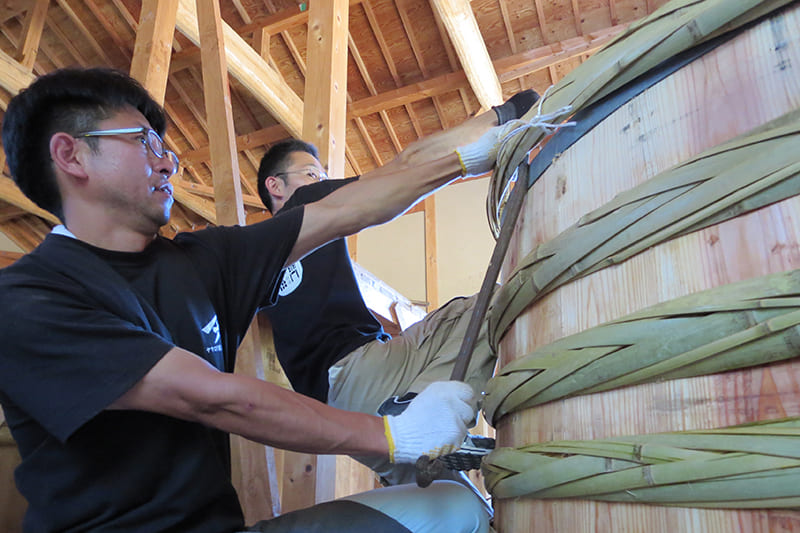
First, he ordered three new barrels from the last living barrel maker at the time. Then in January 2012, Yamamoto and two carpenter friends apprenticed under the craftsman. Hoping to become proficient himself, Yamamoto took part in the making of the barrels he ordered and, after two years of training, he and his friends completed them.
Today, Yamamoto also works as a barrel craftsman, serving customers who include makers of miso, sake and soy sauce.
“We make a huge loss, but crafting barrels is fun. Of course, if wooden barrels had run out, we would have had the option to repurpose wooden water tanks or bathtubs. But when there are various options available, I have my own rule for deciding. That’s, ‘Is it fun or not?’ Regardless of how difficult a task may be, if it isn’t enjoyable, it won’t be sustainable.”
Yamamoto notes that the passion he feels for the barrel-making process translates directly to the flavor of the soy sauce produced, and he believes this helps to not only sell their own soy sauce, but also that of other companies who use similar production methods. Furthermore, if the increase in sales leads to a shortage in barrels, then it will also serve as a catalyst for the barrel makers to finally resume their work, the outcome of which will be a satisfactory result for consumers, producers and craftspeople alike.
Yamamoto’s Kioke Craftsmen Revival Project has attracted fresh groups of participants with each passing year. These include manufacturers and distributors of foods and drinks made in wooden barrels, as well as carpenters and chefs. Each year, participants gather on Shodoshima to make new barrels and share skills, thus increasing the number of craftspeople and ensuring the future of these crucial vessels. In recognition of these efforts, Yamaroku Shoyu was presented with the 2025 Sustainable Japan Award by The Japan Times in September.
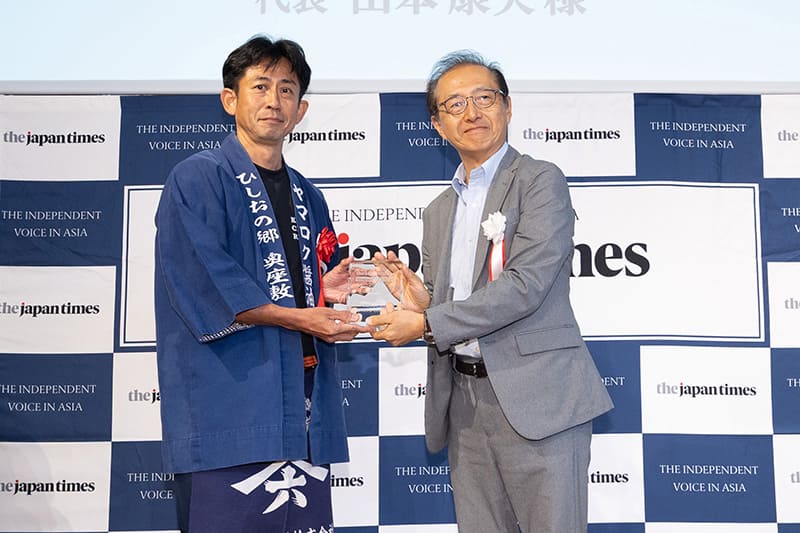
But Yamamoto and his associates are looking even further afield, recognizing that despite the abundance of soy sauce manufacturers in Japan, wooden barrel soy sauce only accounts for around 1% of the condiment’s production. Consequently, it is cooperation, not competition, that will prove vital in promoting the taste of the product both in Japan and worldwide.
“It is important to popularize the taste of authentic wooden barrel soy sauce. If 1% of Japan’s population enjoys this authentic flavor, then there must be others around the world with the same preference. Even if they account for only 1% of the world’s population, that is still a larger market than that of Japan’s 1%. Upon realizing this, we saw the significance of also targeting the world market.”
Not just any soy sauce
“Many people hear the word ‘sauce’ and imagine soy sauce being made by mixing ingredients together in a factory,” Yamamoto said. “Wooden barrel soy sauce, however, is made through fermentation and aging using the power of microorganisms that live in the barrels. In this sense, it shares several similarities with wine and whiskey. Different breweries have different barrels, so complex flavors and aromas are created, giving each soy sauce brewery its own unique style. That’s completely different from ordinary soy sauce mass-produced in stainless steel tanks.”
That’s why Yamamoto uses the Japanese name kioke shoyu for overseas markets.
“The only way for regional kioke shoyu manufacturers to survive is to deliver authentic soy sauce to people who appreciate the authentic taste.”
Yamamoto opened his brewery to the public so that visitors could experience his passion for authentic soy sauce with all five senses. Around 50,000 people visit the brewery each year, including about 10,000 from overseas, enjoying the tours that are available, without reservations, 365 days a year. Many chefs and buyers also visit the brewery during trips to Japan.
“Overseas guests are often surprised by the wooden construction of our brewery. The barrels differ completely in size from those used in wine or whiskey production; some have been used for 150 years, and the soy sauce is brewed by microorganisms in the barrels. No matter how much I explain, seeing it and tasting the final product is best.”
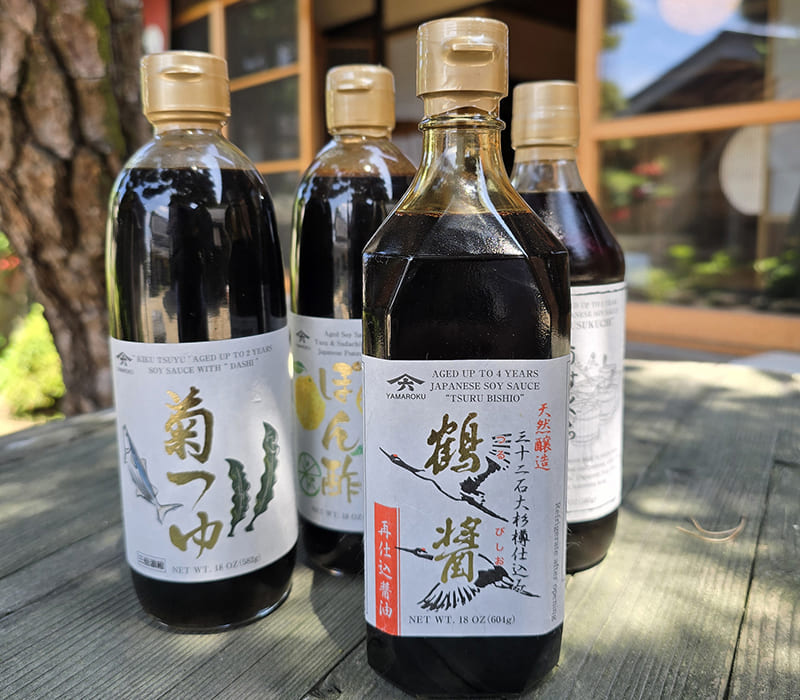
Yamamoto’s ambitions are gradually coming to fruition. Right now, almost 40% of Yamaroku’s products are shipped overseas.
Yamamoto has taken enormous care to ensure that microorganisms can survive comfortably in his brewery, and he has produced the barrels himself to save both the craft and the vessels themselves from extinction. When he talks about his role in the future of barrel-aged soy sauce, it is with a smile.
“When you visit Shodoshima, which has more wooden barrels than anywhere in Japan, see our traditional soy sauce brewery and taste kioke shoyu, I’m sure you’ll understand its appeal.”



